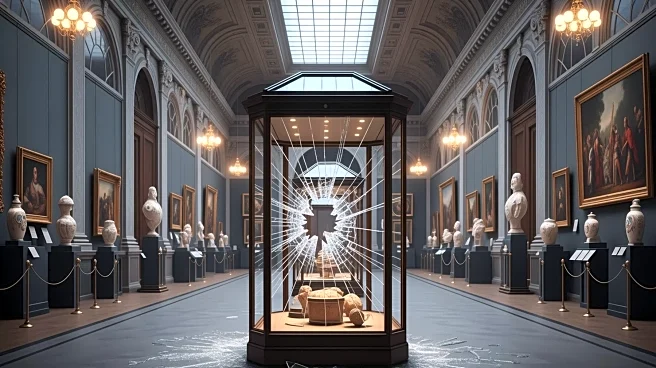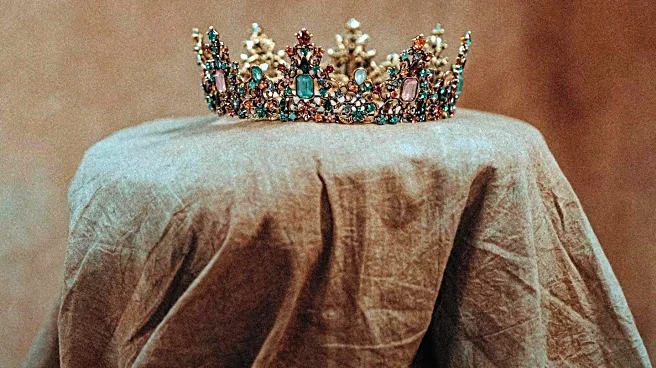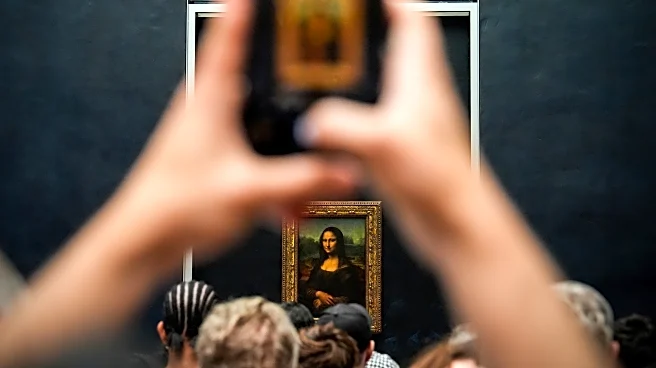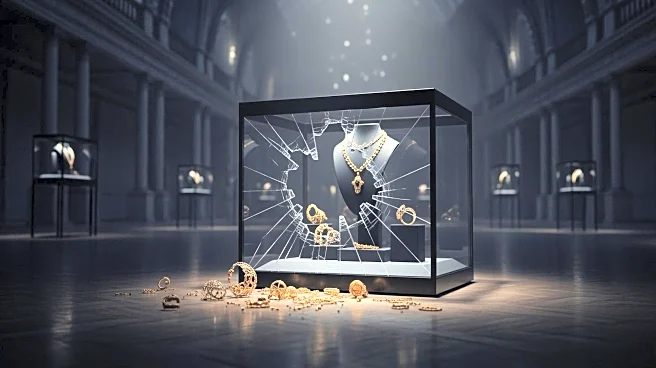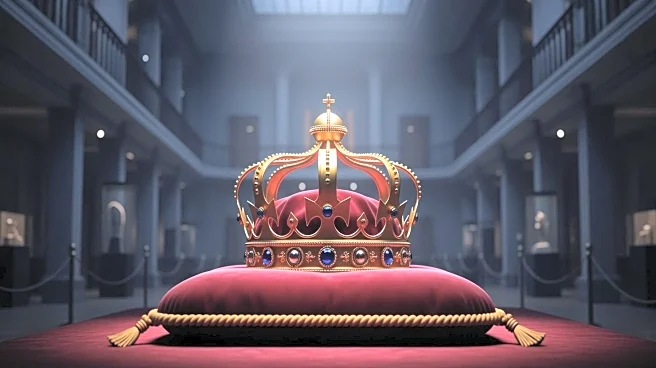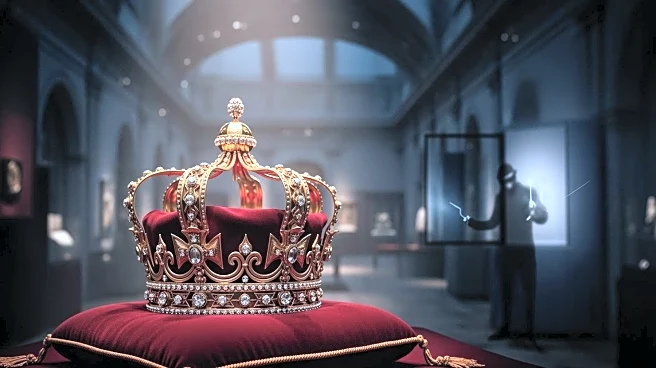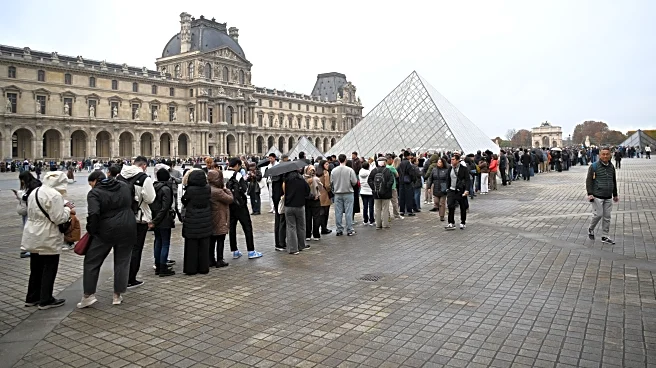What's Happening?
Myles Connor, a notorious American art thief, has reacted to the recent heist at the Louvre Museum in Paris, where several individuals disguised as construction workers stole jewelry of significant historical value. The stolen items include pieces that
belonged to Emperor Napoleon I and Empress Marie-Louise. Connor, who famously stole a Rembrandt painting from a Boston museum in the 1980s, expressed concern over the potential damage to these artifacts, emphasizing their historical significance. French officials have launched an investigation into the robbery, but no suspects have been publicly identified yet.
Why It's Important?
The theft at the Louvre Museum highlights vulnerabilities in the security of cultural institutions and raises concerns about the preservation of historical artifacts. The stolen items are considered national treasures, and their loss could have significant cultural implications. The heist also underscores the challenges faced by law enforcement in recovering stolen art, which often involves complex international investigations. The incident may prompt museums worldwide to reassess their security measures to prevent similar occurrences.
What's Next?
French authorities are actively investigating the heist, aiming to identify and apprehend the perpetrators. The recovery of the stolen artifacts is a priority, given their cultural and historical value. Museums globally may consider enhancing security protocols to safeguard against such thefts. The art community and law enforcement agencies might collaborate to track the stolen items, potentially offering rewards for information leading to their recovery.
Beyond the Headlines
The heist raises ethical questions about the motivations behind art theft and the impact on cultural heritage. It also highlights the ongoing issue of art trafficking and the black market for stolen artifacts. The event could lead to increased dialogue on international cooperation in art crime prevention and recovery efforts.


